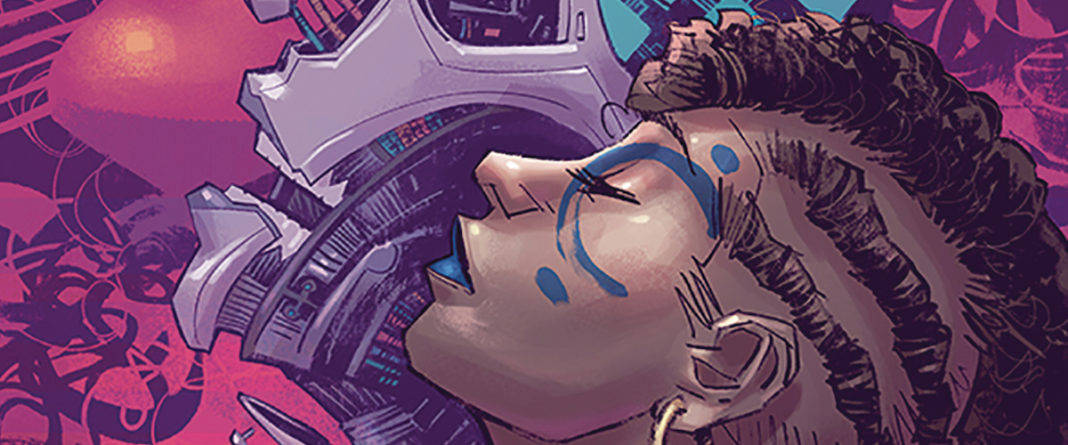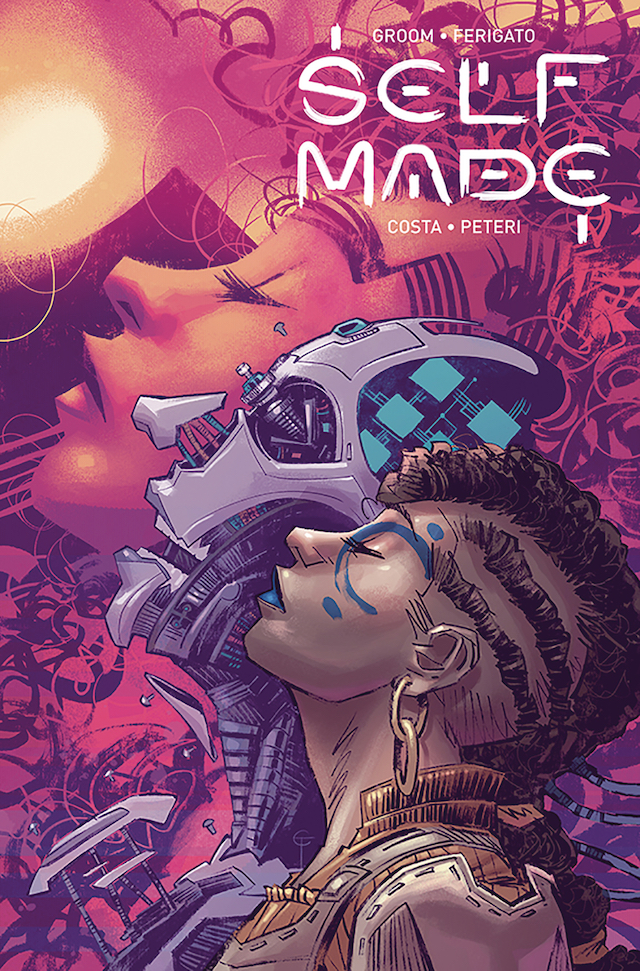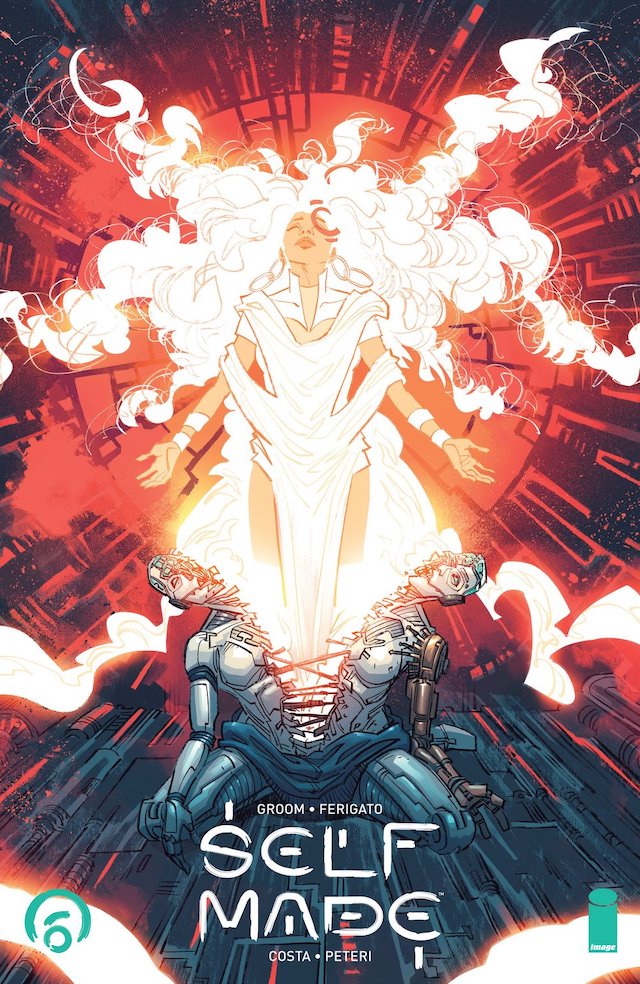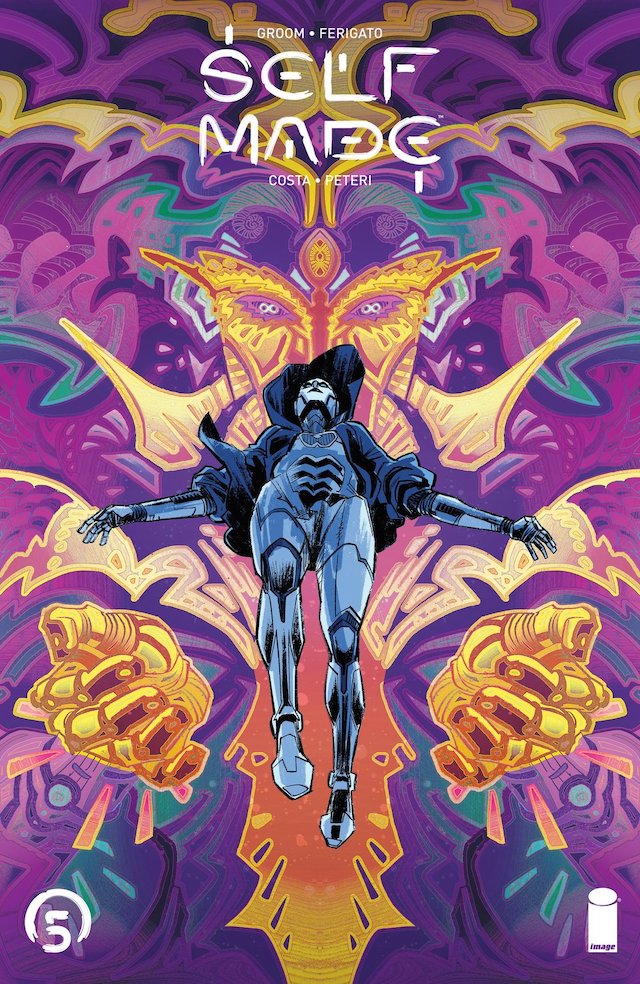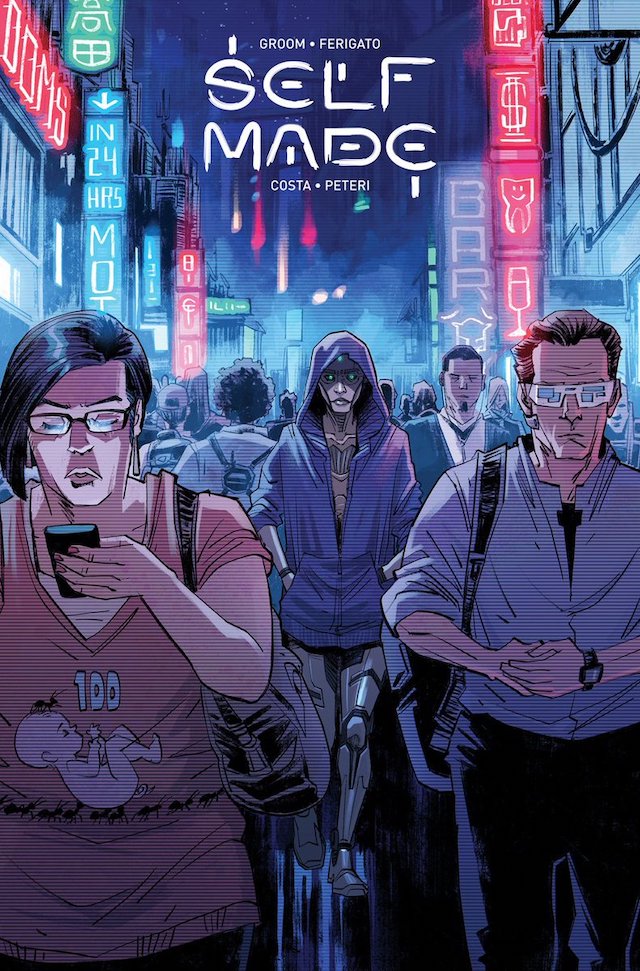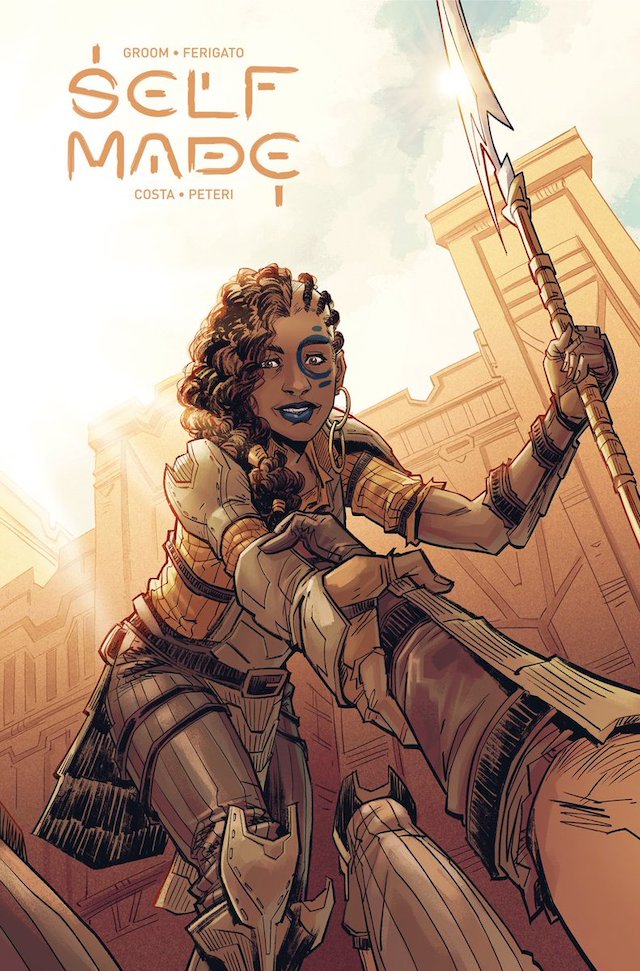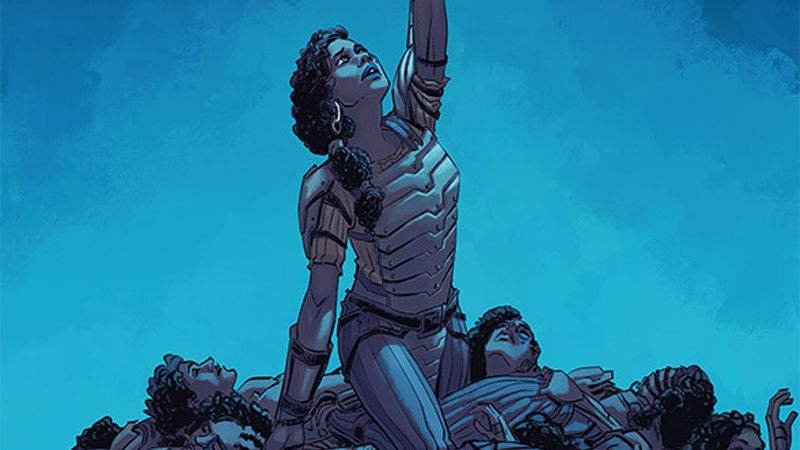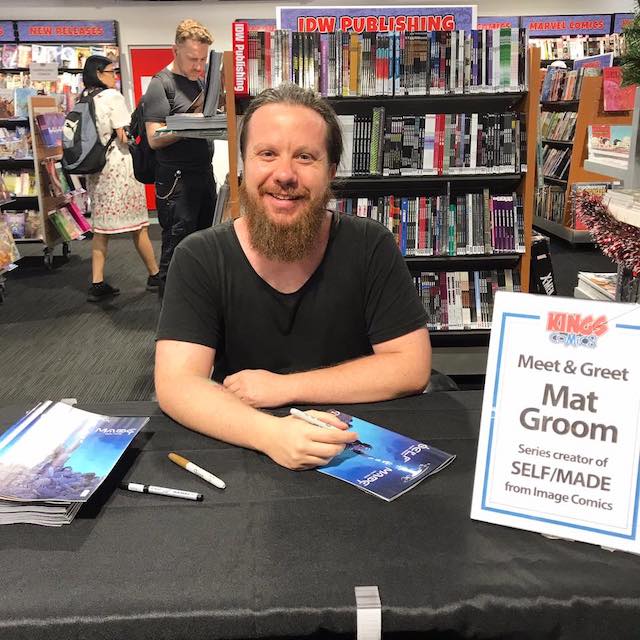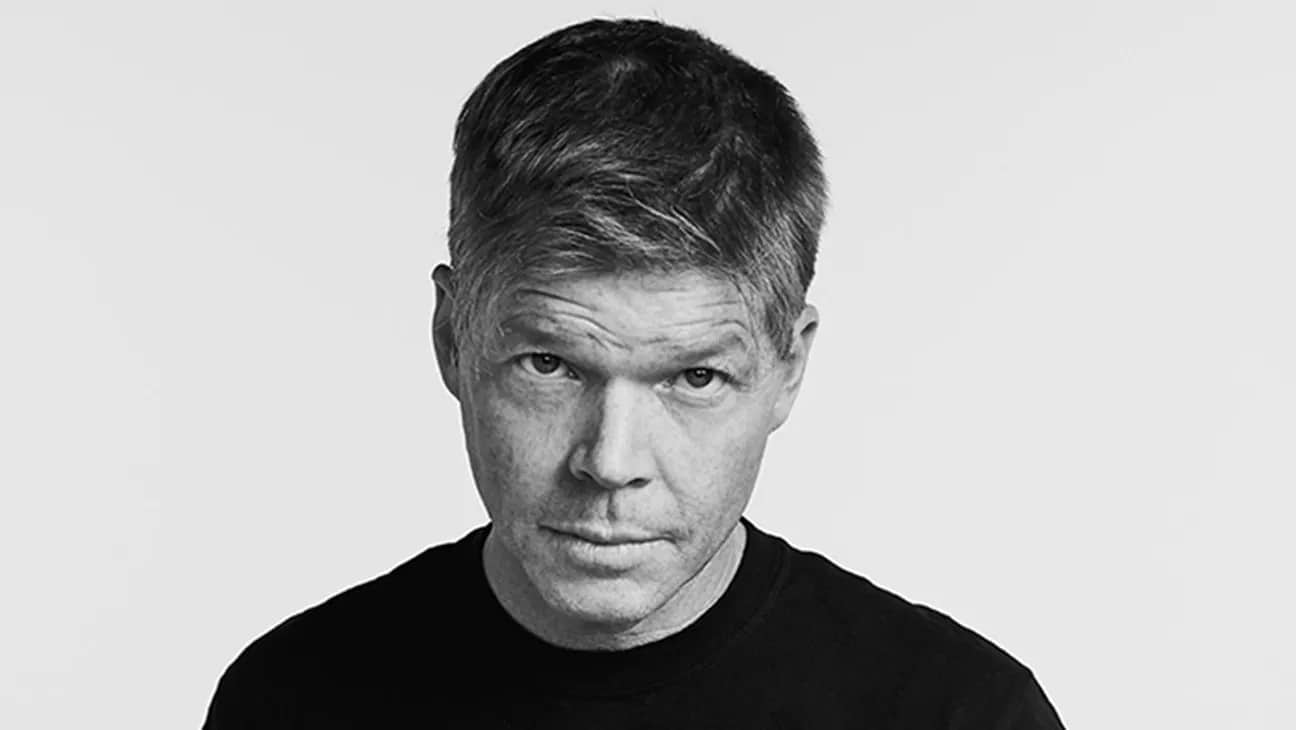Self/Made is far and away my favorite new comic book series of the last year. As with most debut works, even ones released through publishers as popular as Image Comics, it sadly didn’t find enough readers to go past its first volume. But there’s still plenty to discuss about Self/Made, the comic that pits a video game character against the world of its creator, now that the trade paperback is on sale. Check out my latest discussion about the series with its writer, Mat Groom below.
All art used in this post by Marcelo Costa & Eduardo Ferigato
Amala makes her way from living inside a video game to discovering Earth itself is a simulation. Was that always the next step for the story?
Yeah, absolutely. I knew I wanted to tackle a Big Question with Self/Made and, at least to me, the Big Questions never seem to have traditional answers, they just fractal out into more (and often more interesting!) questions the closer you get to them. So I knew I didn’t want the answer to Amala’s questions of ‘where do I come from, and why?’ to simply be ‘you were made by a human from Earth, and you have a grand, clear purpose!’ It was just too clean.
So, in part because role-playing video games and simulation theory were all swirling around in my head when I was outlining the series, it seemed appropriate to chain those together and extrapolate them out, to ensure (in that big, external, ‘COMICS!’ way) that Amala’s reality was as complex and intractable as our own.
Do you know what the world beyond our own looks like?
I do, yeah. I try to world-build at least one layer beyond what I need to ensure for the story, to make sure it’s robust enough in case I need to follow the story in an unexpected direction later, or I want to move the story in that direction in a potential follow-up. In this case, it’s the latter. You might notice that, towards the end of issue 6, Amala is on ‘our’ end of the chasm, and subsequently returns to our world… and Bryce… is not. And does not.
Amala reaches a place between our world and the next. Why bring her there instead of directly to the world that created our universe?
I wanted Amala turning her back on Bryce (and letting go of the belief that the meaning of her life could be found by uncovering the origin of creation) to be as difficult as possible.
It’s easier to accept that you’ve been searching for something in the wrong place if you get to check the place first, right? But this way, Amala had to take it on faith. She had to move through and process her own existential fear without the safety rail.
That and, y’know, I think you get more juice out of your storytelling when you can put your antagonist between your protagonist and everything (they think) they want at the climax.
Has writing Self/Made influenced your own view on the concept of a higher power?
I don’t think it has changed the fundamentals. I don’t believe in a particular higher power, but I suspect there might be something, and I try to keep my mind open to different ideas about what that could be, and what that might mean. That hasn’t changed. But, in going on this journey alongside Amala, I do think I’ve… made some sort of peace with that, maybe? I think before I would’ve classified my belief/s as ‘undecided’, but I’ve come to appreciate that my own answers are answers. And they’re substantive and satisfying (for me), even if they’re not comprehensive.
Religion is often born out of people wanting to know what happens to them after they die. Is what drives Amala, who lost everyone she’d ever known at the beginning of the series?
I don’t know that Amala’s motivation was really framed that way in her mind specifically– but ‘where do I go after I die?’ and ‘where did I come from, and why?’ aren’t terribly different questions at their core, I don’t think. And I think the fear of death is a real motivating factor there, as well, consciously or not. Nee touches on that a bit– that to be alive is to try and grapple with the contradiction of the unlimited possibilities of life and the singular, immutable certainty of death. So even though death, as we think of it, isn’t necessarily top-of-mind for Amala because her early revelations make it seem almost irrelevant (she technically did ‘die’ halfway through issue #1 and got through that fine), the finite nature of personal existence adds hefty stakes to her search for meaning.
Amala’s grasp of reality is blurred at best. How does she determine what matters when she struggles to even understand what’s real?
I think that question is actually central to the series, and came up very early in its development. As I mentioned, the chain of video game to simulated Earth to beyond was in place from the start, so the natural question absolutely is ‘why wouldn’t the reader, and Amala, just think that next world was simulated too?’. It could just go on forever. And if it that’s the case (at the risk of getting all Morpheus on you), what is ‘real’? Which is the world that matters?
Of course, that’s the point. There is no real. Or, if you prefer, everything’s real. And that’s really your choice, right? Nothing matters. Or, everything matters. Amala, ultimately, arrives at the latter conclusion– that though her homeworld was a creation, it still ‘matters’, and its inhabitants matter… because everybody matters. Whatever their origin.
Did Kyle Higgins influence the direction of story in his role as the editor?
Not in the macro sense, no. Kyle wasn’t particularly interested in shaping the direction of the story at all– instead, his role was more practical, lending his experience and insight to help me navigate the mechanics of building the story I had in mind.
Which isn’t to say he didn’t impact the comic, of course– he very much did. For example, the in-between world that the majority of issue #6 takes place in was originally a big, ceremonial chamber, not the abstract aether we ended up with. I had envisioned it this way because I was a rather… fundamentalist… in my view that Amala shouldn’t get a significant or meaningful glimpse of what life might be like beyond our world. But Kyle quite rightly pointed out that I wasn’t fully seizing the possibility of the premise, and I wasn’t giving Eduardo and Marcelo the best canvas for expressing the story.
So while Kyle might not have influenced the ‘direction’ of the story exactly, he absolutely improved the quality of it!
Self/Made is on hiatus for the time being. How can you see the comic returning?
Two roads diverge in this yellow wood. One road involves the trade paperback (out July 24!) selling well enough to suggest a second volume is financially viable, in which case Eduardo and I would get to work on Self/Made II: The Radicals in the very near future.
The other road involves Eduardo and I working on other projects and returning down the line when we’ve been able to grow our audiences enough to support the book.
Both options require some good fortune, of course, so, uh… please send your good vibes of choice our way.
What other kinds of projects are you developing?
Nothing’s locked down yet, but I have two major projects I’m developing at the moment. One is a YA graphic novel, and the other is a comic closer to Self/Made… but, if you can believe it, crazier and more ambitious by a few orders of magnitude. I’m hoping to get a green light on both of those soon.
What have you learned over the course Self/Made’s production about comics as an industry and an art form?
Oof. So much. Publishing through Image has required a tremendously rapid (but appreciated and beneficial) education in what goes into producing a comic. I think, though, the most powerful and important thing that I learned is that… it’s doable? We can make comics! I know that might sound strange, but… Self/Made was my first significant work of original fiction. Now, I knew Eduardo could do comics (exceptionally well) because we had done so before, but… I hadn’t. So I just sort of had to trust that I’d figure it out as I went along (and trust my collaborator and my editor to help me).
But now, it’s done! And though it’s not perfect, and I still have much to learn, I’m quite proud of Self/Made. So I know I can write a comic. Which is profoundly relieving, because I find it incredibly meaningful and rewarding. It would’ve been properly heartbreaking if I discovered I was entirely incapable of doing it soon after learning how much I loved it.
Follow Mat @MathewGroom and go buy his comic Self/Made, now available in trade paperback wherever great comics are sold.


